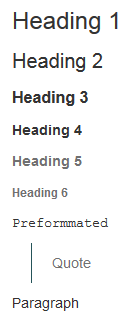The wiki-based Confluence environment is intended to be a collaboration platform for GeCIP members. It has been designed to be as simple as possible with the hope that each domain and member can create, edit and maintain their own content. The Research Environment is, by design, restrictive, but we hope that this collaboration platform will allow you to work effectively within it.
|
The collaboration platform is divided into spaces. There is a space for the Office of Chief Scientist (OCS) and then each GeCIP domain also has its own space. Within the OCS space is where you'll find a lot of information on the 100,000 Genomes Project and other reference material. Each domain's space will contain a variety of information on their activities for both members and non-members.
Just like any other website there are only parts of the collaboration platform that you're allowed to edit and view. What you're able to edit and view is determined by what GeCIP domains you are a member of and what role you play within that domain. Exactly how you see the page, and what you're able to do on the page will depend on both of these.

At the top of each page the header bar gives you access to:

Once in a space, the left hand side of the page will show the side bar. This can be collapsed or expanded by clicking on '>>' (H) at the bottom. This gives access to:

At the top of each page, permissions depending, you'll have the following options:
If you have the right permissions, then you can easily edit and create content within a space.
By clicking on ![]() in the top right-hand corner of a page, or after creating a new page, you'll enter a text editor that will allow you to format and structure your page in a standardised way via a toolbar at the top of the page:
in the top right-hand corner of a page, or after creating a new page, you'll enter a text editor that will allow you to format and structure your page in a standardised way via a toolbar at the top of the page:


Using macros helps you to expand the capabilities of your page, allowing you to add extra functionality or include dynamic content. For example, use the Table of Contents macro to insert a listing of the headings in the page like the table shown at the top of this page; please note, this will only work if you've used the heading paragraph styles listed above. Or if you'd like to specifically mention someone in a page you can type '@' and then start typing their name to invoke the user mention macro.
You can add general comments to the page as a whole by clicking on the text box at the bottom labelled 'Write a comment..'. This will then open a textbox with much the same formatting options as for a page.
To add inline comments, select the text you'd like to comment on and the 'Add inline comment' button will appear: ![]()
By clicking on the comment icon you'll then be given a text box to add your comment.
You can 'watch' a certain page, or indeed an entire space, by clicking on the  button in the top right of the page. By watching a page you'll be notified by email when it is changed, deleted or commented on. When you save a page you're editing you can chose whether or not to notify watchers of the changes you've made
button in the top right of the page. By watching a page you'll be notified by email when it is changed, deleted or commented on. When you save a page you're editing you can chose whether or not to notify watchers of the changes you've made